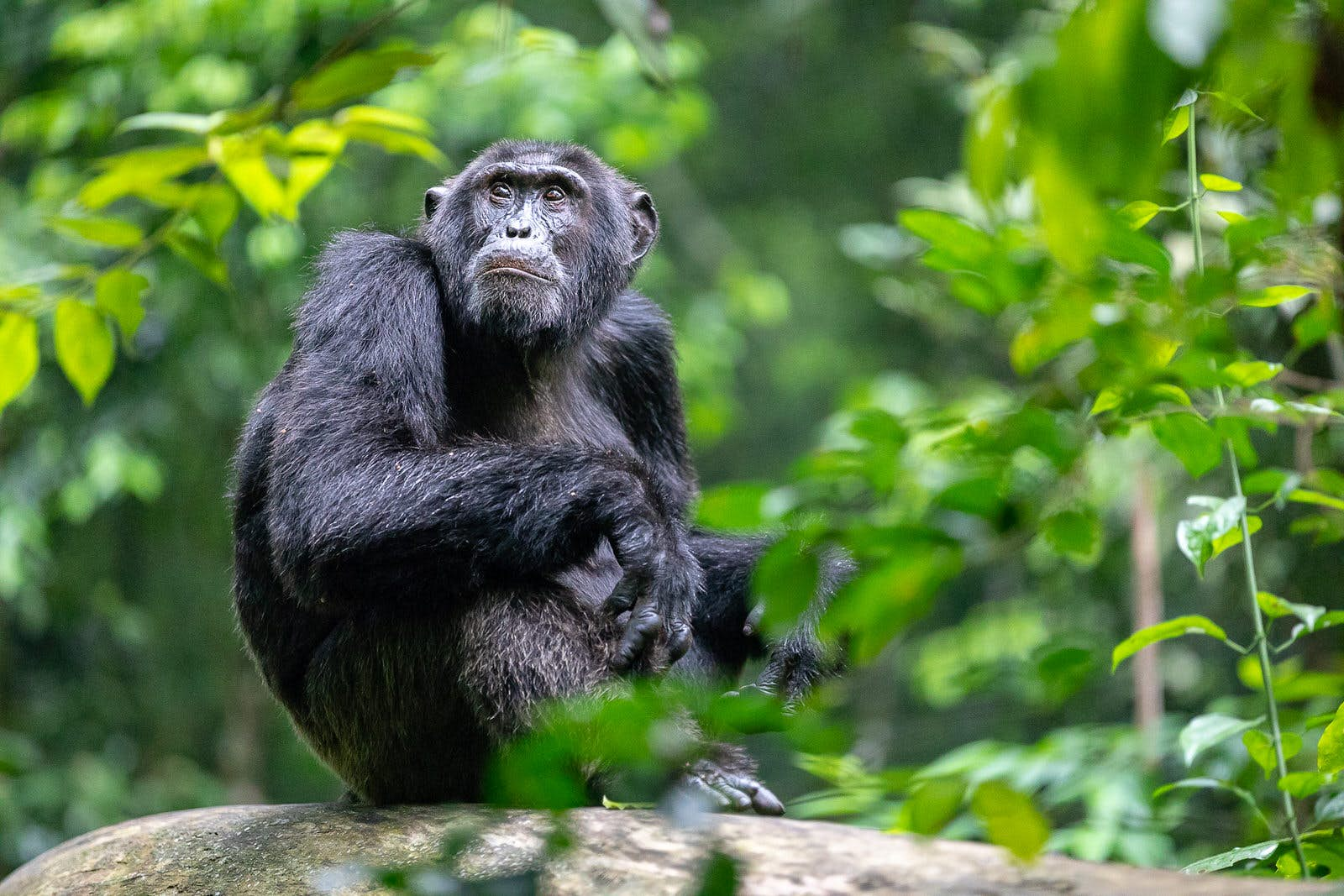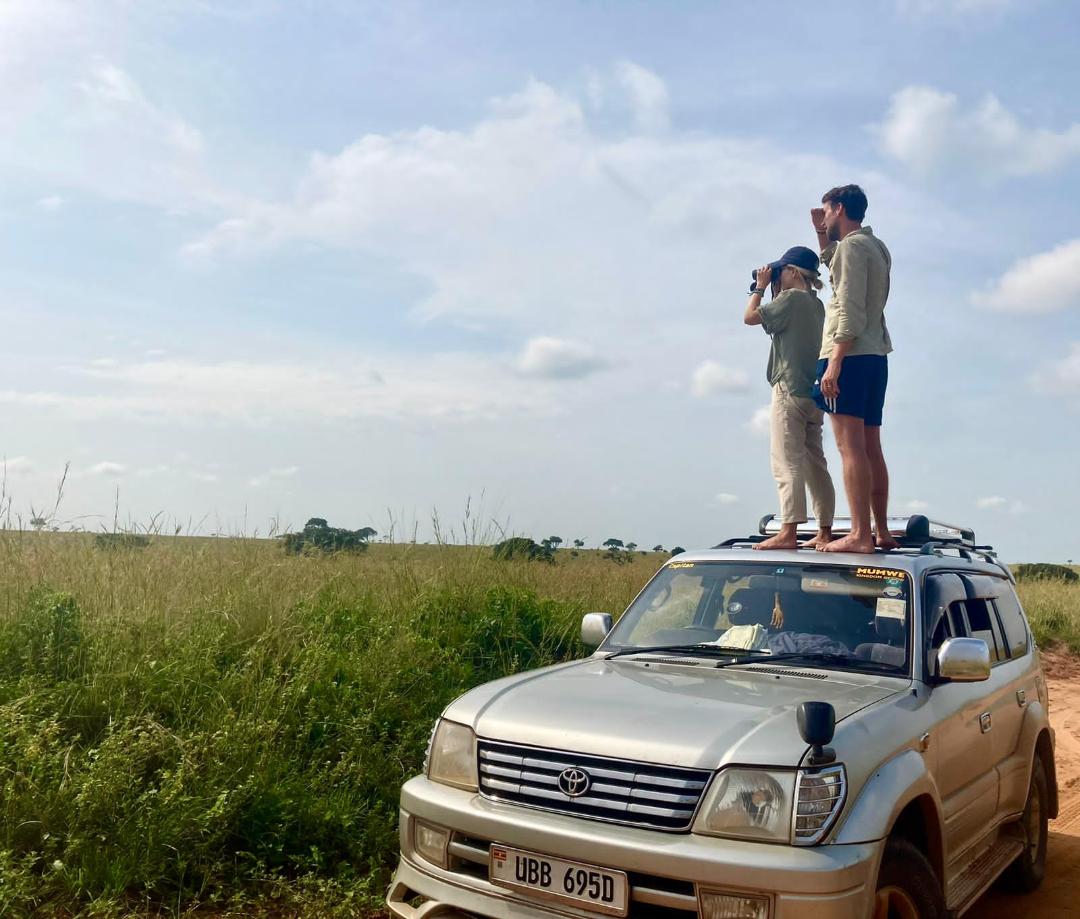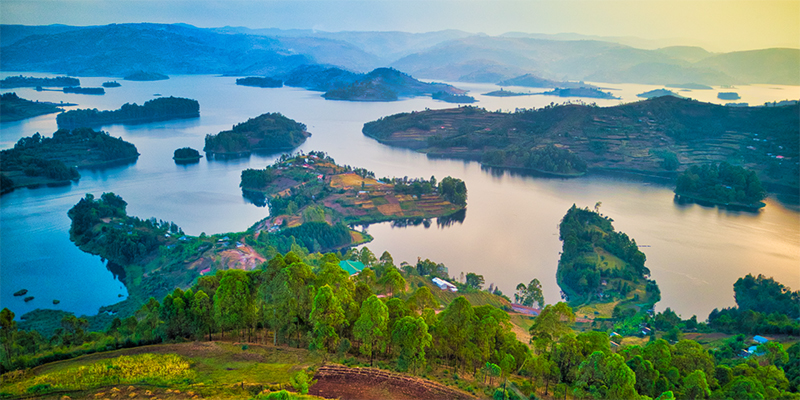
Discover The Exciting Sights & Sounds of Western Uganda
Western Uganda is a region where nature displays its most spectacular artistry, creating a tapestry of sights and sounds that captivate the senses and stir the soul. From the mist-shrouded peaks of the Rwenzori Mountains to the ancient forests of Bwindi, from the roaring waters of Murchison Falls to the gentle lapping of crater lakes, this corner of the Pearl of Africa offers an immersive experience that engages every sense. Here’s your guide to the unforgettable sights and sounds that make Western Uganda truly magical region for exciting Uganda safari adventures in 2025.
The Visual Splendor: Sights That Take Your Breath Away
The Rwenzori Mountains: Africa’s Mystical Peaks
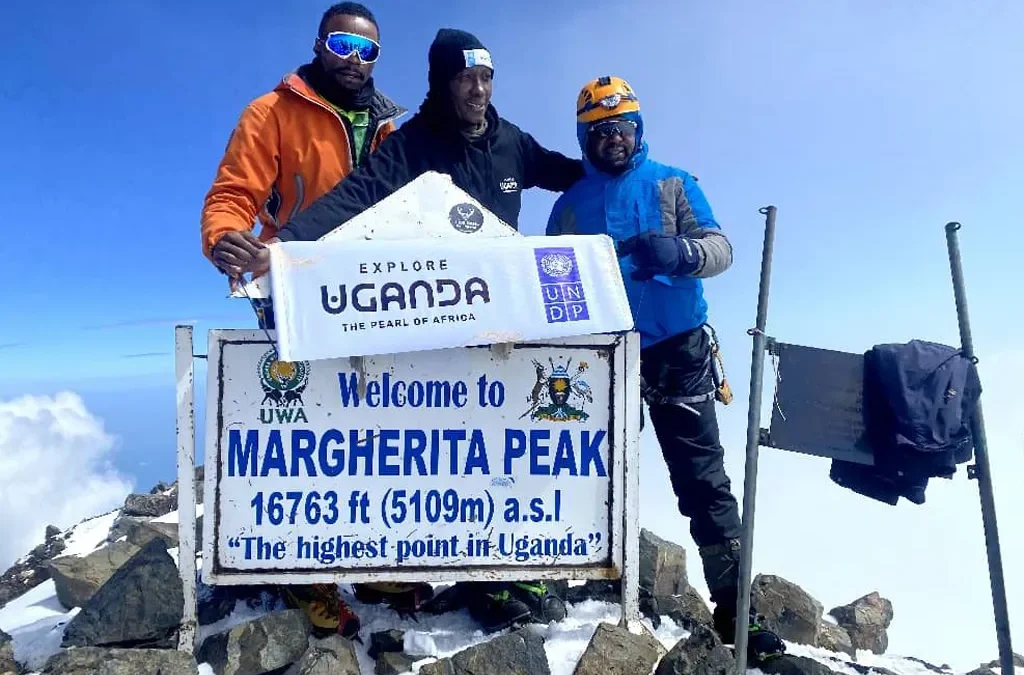
Rising majestically from the western landscape, the Rwenzori Mountains create one of Africa’s most dramatic backdrops. These ancient peaks, permanently snow-capped and shrouded in mist, offer visitors a glimpse into a world that feels almost otherworldly. The mountain range includes Africa’s third-highest peak, with Mount Stanley reaching 5,109 meters above sea level.
As you approach the foothills, the sight of these towering giants emerging from the clouds is nothing short of magical. The lower slopes are clothed in dense montane forests, while higher elevations reveal bizarre vegetation zones including giant groundsels and lobelias that seem to belong to another planet. The interplay of light and shadow on these peaks throughout the day creates a constantly changing panorama that photographers and nature lovers find irresistible.
Queen Elizabeth National Park: A Savannah Masterpiece

Queen Elizabeth National Park presents a visual feast that encompasses vast savannahs, sparkling lakes, and dramatic crater formations. The park’s landscape is dominated by the stunning Kazinga Channel, a 40-kilometer waterway that connects Lake Edward and Lake George, creating a natural highway for wildlife.
The sight of hundreds of hippos basking in the channel’s waters while elephants drink at the shores creates scenes straight from a nature documentary. The park’s famous tree-climbing lions in the Ishasha sector provide one of nature’s most unusual spectacles, as these massive cats lounge in the branches of ancient fig trees, seemingly defying gravity.
The crater lakes scattered throughout the park offer some of the most photogenic landscapes in Africa. These perfectly circular water bodies, carved dramatically into green rolling hills, reflect the sky like natural mirrors and provide stunning vantage points for panoramic photography.
Bwindi Impenetrable Forest: An Ancient Cathedral of Green
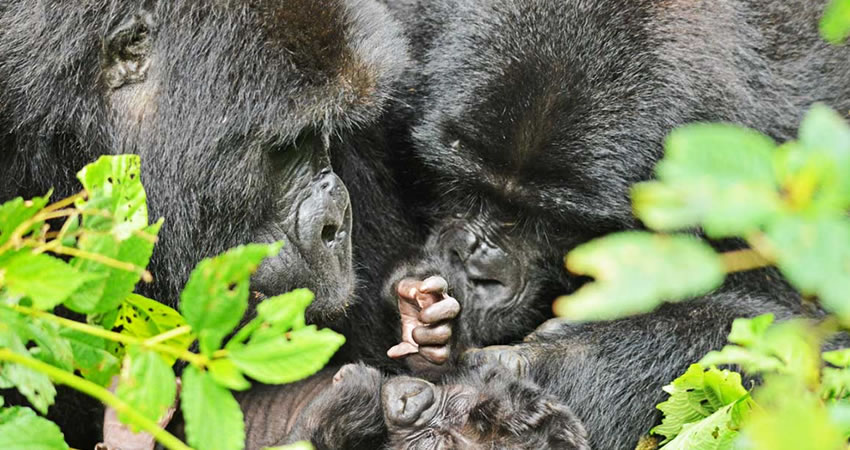
Bwindi Impenetrable Forest presents a sight that has remained largely unchanged for over 25,000 years. This mist-covered jungle creates a natural cathedral where ancient trees form towering columns and filtered sunlight creates an ethereal atmosphere. The forest is home to approximately 459 mountain gorillas, representing almost half of the world’s remaining population.
The sight of a silverback gorilla in its natural habitat is profoundly moving. These gentle giants, with their expressive eyes and human-like gestures, create moments of connection that transcend the ordinary tourist experience. Watching a gorilla family interact, play, and go about their daily lives offers insights into our own evolutionary heritage.
The forest itself is a living museum of biodiversity, with over 400 plant species creating a green tapestry of incredible complexity. Massive buttressed trees, hanging vines, and delicate orchids combine to create a visual symphony that changes with every step deeper into the forest.
The Crater Lakes: Nature’s Perfect Circles

Western Uganda is dotted with numerous crater lakes, each offering its own unique character and beauty. Lake Bunyonyi, often called the “Lake of Little Birds,” is perhaps the most spectacular. Its irregular shape, dotted with 29 islands, creates a landscape that seems almost too perfect to be real.
The lake’s terraced shores, where local communities have carved agricultural plots into the steep hillsides, create a patchwork of green that changes color with the seasons. From elevated viewpoints, the sight of this lake system stretching into the distance, with mist rising from its surface at dawn, provides some of the most memorable photographic opportunities in Africa.
Semuliki National Park: The African Congo in Miniature
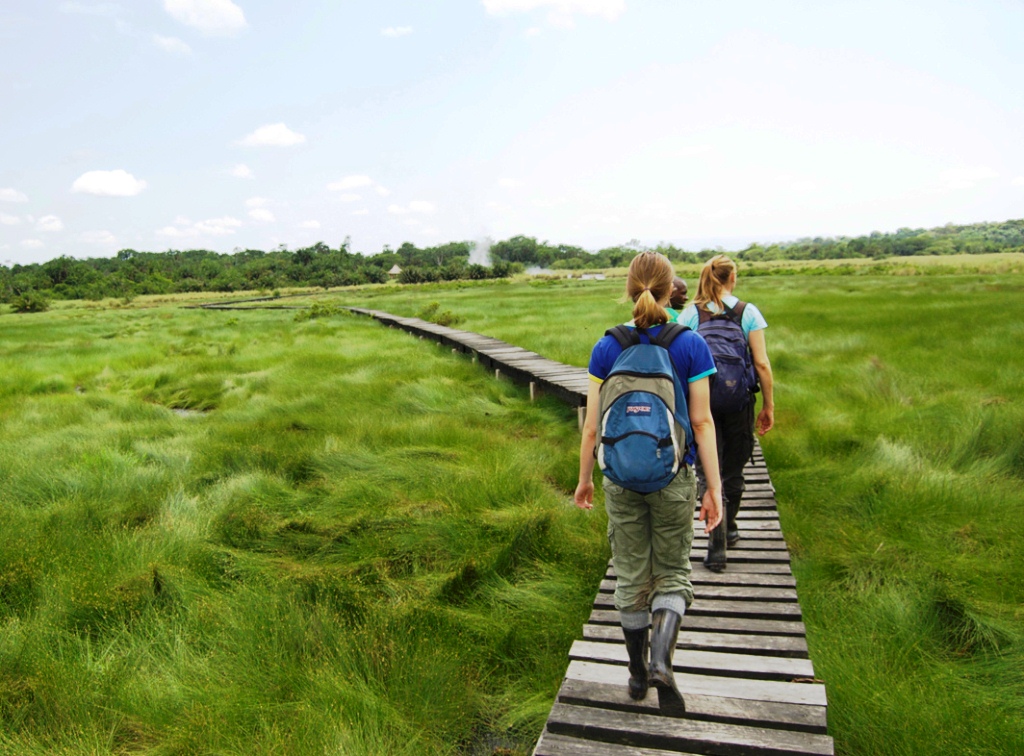
Semuliki National Park offers a unique visual experience as Uganda’s only true lowland tropical rainforest. The park’s hot springs bubble up from the earth, creating surreal landscapes where steam rises from the forest floor. The sight of these natural geysers, some reaching temperatures of 103°C, creates an almost mystical atmosphere.
The forest canopy here is different from anywhere else in Uganda, with tall trees creating a dense green ceiling that filters light into ethereal beams. The park’s wildlife, including forest elephants and numerous primate species, adds movement and life to this already spectacular landscape.
The Natural Symphony: Sounds That Stir the Soul
The Dawn Chorus: Nature’s Daily Concert
Each morning in Western Uganda begins with one of nature’s most spectacular performances. The dawn chorus starts before first light, with the haunting calls of various bird species creating layers of sound that build into a magnificent symphony. In Bwindi Forest, this chorus includes the distinctive calls of over 350 bird species, from the melodious songs of sunbirds to the distinctive calls of hornbills.
The sound of the forest awakening is punctuated by the occasional rumble of a distant gorilla or the crash of a branch as elephants forage in the undergrowth. These sounds create an acoustic landscape that changes throughout the day, offering different experiences from dawn to dusk.
The Roar of Murchison Falls: Nature’s Thunder
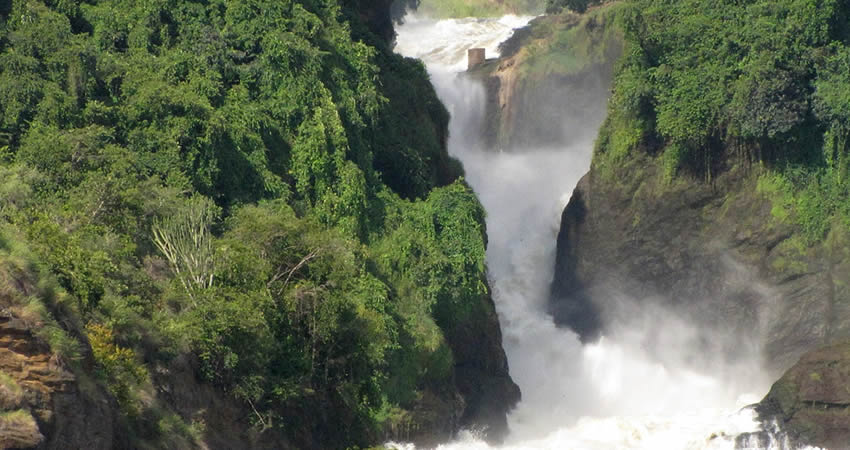
Although technically in northern Uganda, the sounds of Murchison Falls are legendary and deserve mention in any discussion of Uganda’s natural audio experiences. The thunderous roar of the Victoria Nile as it forces its way through a narrow 7-meter gap creates a sound that can be heard for miles. The power and intensity of this natural phenomenon create an audio experience that visitors never forget.
The Nocturnal Symphony: Night Sounds of the Wild
As darkness falls across Western Uganda, an entirely different soundscape emerges. The nocturnal chorus includes the haunting calls of various owl species, the distant roar of lions in Queen Elizabeth National Park, and the peculiar whooping calls of hyenas. In Bwindi Forest, the night sounds include the calls of nocturnal primates and the rustle of small mammals moving through the undergrowth.
The sound of hippos grunting and splashing in the Kazinga Channel creates a bass note that underpins the entire nocturnal symphony. These massive animals are surprisingly vocal, and their calls carry across the water, creating an atmosphere that’s both peaceful and wild.
The Gentle Sounds of Crater Lakes
The crater lakes of Western Uganda provide a more subtle but equally enchanting auditory experience. The gentle lapping of water against the shores, the calls of water birds, and the occasional splash of a fish jumping create a peaceful soundtrack that contrasts beautifully with the more dramatic sounds of the larger parks.
Lake Bunyonyi, in particular, offers a sonic experience that includes the calls of numerous bird species that give the lake its name. The acoustic properties of the lake, surrounded by hills, create natural amplification that makes every sound seem more vivid and immediate.
The Human Element: Cultural Sounds

Western Uganda’s soundscape isn’t complete without mentioning the human elements that add richness to the natural symphony. The singing of local communities, particularly during traditional ceremonies and daily activities, creates a cultural soundtrack that complements the natural sounds.
The rhythmic pounding of traditional drums, the melodious calls of vendors in local markets, and the laughter of children playing near the water all contribute to the region’s unique audio environment. These sounds remind visitors that Western Uganda is not just a wilderness but a living landscape where humans and nature coexist.
Seasonal Variations: How Time Changes the Experience
Wet Season Symphony (March-May, September-November)
During the rainy seasons, Western Uganda’s sights and sounds undergo dramatic transformation. The landscape becomes lush and green, with waterfalls cascading down the mountains and every plant seeming to glow with vitality. The sounds of rain on the forest canopy create a natural percussion that varies from gentle pattering to thunderous downpours.
The wet season brings out different wildlife behaviors and sounds. Bird calls become more frequent and varied as it’s breeding season, while the sound of rushing water from swollen streams and rivers adds a dynamic element to the natural soundtrack.
Dry Season Clarity (December-February, June-August)
The dry seasons offer different but equally spectacular experiences. The clearer weather provides better visibility for mountain views and wildlife spotting, while the sounds become more concentrated around water sources. The calls of animals gathering at watering holes create intense acoustic experiences, particularly during the early morning and evening hours.
The Sensory Journey: Combining Sights and Sounds
Gorilla Trekking: The Ultimate Sensory Experience
Gorilla trekking in Bwindi represents the pinnacle of Western Uganda’s sensory offerings. The visual impact of encountering these magnificent creatures in their natural habitat is combined with the sounds of the forest, the grunts and vocalizations of the gorillas, and the subtle sounds of their movement through the undergrowth.
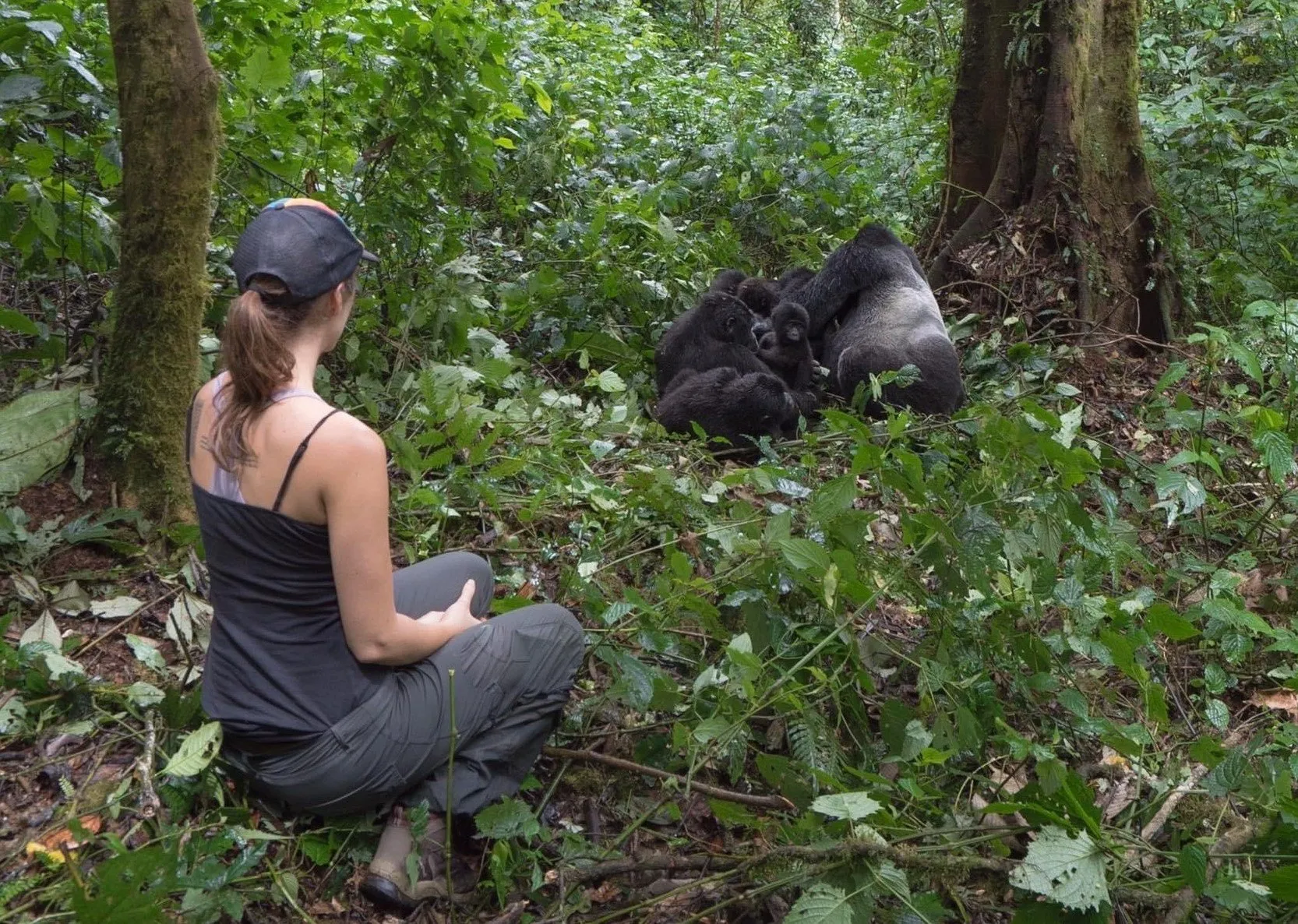
The experience begins with the sounds of the forest as you trek through the dense vegetation, building anticipation with every step. When you finally encounter a gorilla family, the combination of visual magnificence and the gentle sounds of their interactions creates moments of profound connection with the natural world.
Boat Cruises: Floating Through Paradise
Boat cruises on the Kazinga Channel and other water bodies in Western Uganda offer unique perspectives on both sights and sounds. The gentle puttering of the boat engine provides a subtle backdrop to the natural sounds of the water and wildlife, while the changing perspectives offer constantly evolving visual experiences.
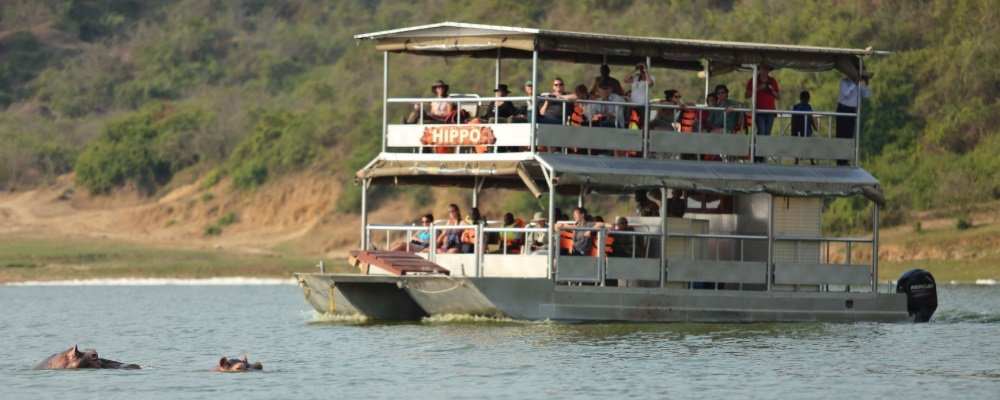
From the water, you can observe the complex interactions between different species, from the massive hippos wallowing in the shallows to the elegant waterfowl feeding along the shores. The sounds of water birds, the splash of diving cormorants, and the distant calls of terrestrial wildlife create a rich audio tapestry.
Mountain Hiking: Ascending Through Sound Zones
Hiking in the Rwenzori Mountains offers a unique opportunity to experience how both sights and sounds change with altitude. As you ascend, the sounds of the lowland forests give way to the different acoustic environment of the montane zones, and finally to the relative silence of the high-altitude moorlands.
Each elevation zone has its own characteristic bird songs, insect sounds, and even the sound of wind through different types of vegetation. The visual changes are equally dramatic, from dense tropical forests to alpine meadows and finally to the stark beauty of the high peaks.
Conservation and the Future of Western Uganda’s Natural Heritage
The spectacular sights and sounds of Western Uganda face ongoing challenges from human population growth, climate change, and economic pressures. However, the region’s protected areas represent some of the most successful conservation efforts in Africa, with gorilla populations slowly recovering and tourism providing economic incentives for conservation.
The sounds of Western Uganda today include not just the natural symphony but also the voices of conservationists, local communities, and visitors who recognize the importance of preserving this natural heritage for future generations. The sight of young gorillas playing in Bwindi or the sound of a successful conservation program in action provides hope for the future.
Planning Your Sensory Journey
To fully experience the sights and sounds of Western Uganda, consider planning a multi-day Uganda safari itinerary that includes:
- Early morning game drives to experience the dawn chorus
- Boat cruises during different times of day to appreciate changing light and sounds
- Gorilla trekking for the ultimate wildlife encounter
- Mountain hiking to experience different ecological zones
- Cultural experiences to appreciate the human elements of the region’s soundscape
Each season offers different experiences, so consider what aspects of Western Uganda’s sights and sounds are most important to you when planning your visit.
Conclusion: A Symphony for All Senses
Western Uganda offers one of the world’s most complete sensory experiences, where spectacular sights are complemented by an equally impressive natural soundtrack. From the misty peaks of the Rwenzori Mountains to the ancient forests of Bwindi, from the wildlife spectacles of Queen Elizabeth National Park to the tranquil beauty of the crater lakes, this region provides experiences that engage all the senses and create lasting memories.
The combination of dramatic landscapes, incredible wildlife, and rich cultural heritage creates a destination where every sight tells a story and every sound adds to the narrative. Whether you’re listening to the dawn chorus in Bwindi Forest, watching tree-climbing lions in Queen Elizabeth National Park, or simply sitting by a crater lake at sunset, Western Uganda offers moments of natural beauty and acoustic wonder that will stay with you long after your journey ends.
This is a place where nature’s symphony plays on, where ancient forests whisper their secrets, and where the sights and sounds of the wild world continue to inspire and amaze all who are fortunate enough to experience them. Western Uganda truly represents one of Africa’s most precious natural treasures, where the Pearl of Africa reveals its most spectacular facets to those who come seeking the authentic sights and sounds of the wild.
Are you planning a safari in Uganda to visit the gems of western region- simply contact Mumwe Safaris today by emailing to info@mumwesafarisuganda.com or calling us on +256-700135510 to speak with the reservations team.

